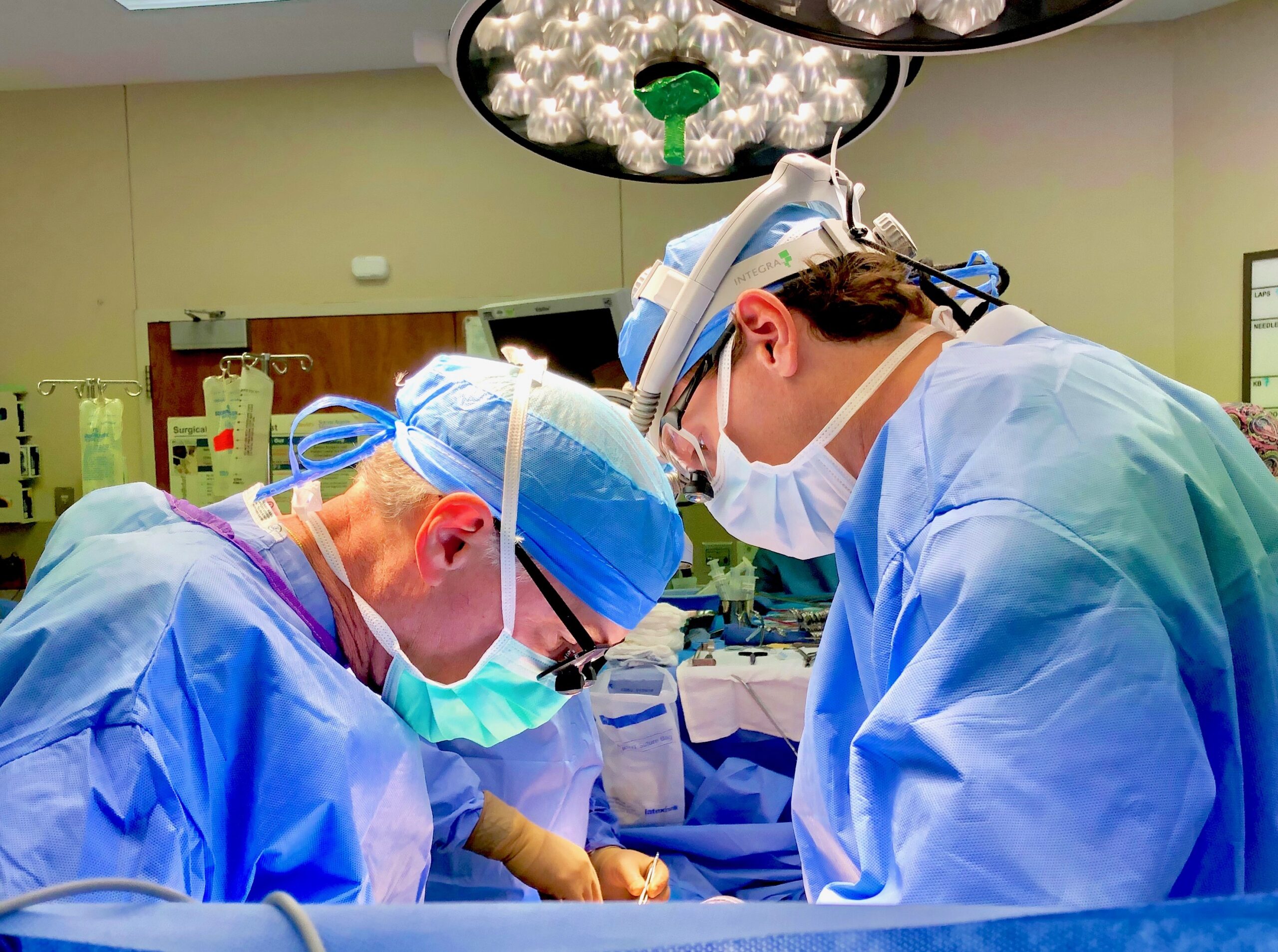February is American Heart Month and we are highlighting some of the important therapies we work with often to aid in repairing and/or extend the life of the heart.
Our board-certified cardiothoracic surgeons perform procedures day in and day out to improve heart health and save lives. Some of these include administering technologies such as ECMO and VAD.
Both are typically used as a last resort when other cardiac treatments have not proven successful or as a means to take over some of the work of the heart as a “bridge” to a heart transplant or other restorative procedures later on.
What is ECMO?
ECMO (or Extracorporeal Membrane Oxygenation) performs the essential functions of the heart or lungs, or both, if they are in a weakened state.
For the heart, it helps to circulate oxygenated blood throughout the body to all the organs when the heart cannot do so itself, and for the lungs it assists with breathing.
Tubes from the machine are expertly connected by our cardiac surgeons to a patient’s arteries or veins in the legs, chest or neck.
ECMO is used when there is little blood flow and oxygen going out to the organs due to something like:
- Heart attack
- Pulmonary embolism
- Traumatic injury to the heart or lungs
- Years of damaging heart or lung disease, or congestive heart failure
Depending on the situation, a patient can remain on ECMO for several weeks if needed, or even months in extreme cases, until the heart or lungs have healed or been repaired.
What is VAD?
A VAD, or ventricular assist device, is a battery-operated, mechanical pump surgically implanted into the chest to support the function of a weakened or failing heart. It can serve as a life-saving measure for those with advanced congestive heart failure when all other previous medical interventions have not worked.
A VAD is most often implemented for the following reasons:
- As a “bridge to recovery” where the VAD is implanted temporarily to rest the heart and give it time to recover
- As a “destination therapy,” or final therapy, meaning no other treatments are available and the VAD can support a weak heart for an extended amount of time, years even, in order to enhance the remaining quality of life
- As a “bridge to transplant” to support a patient while waiting for a heart transplant
Many patients are able to live up to ten years and beyond with a VAD depending on their circumstances.
The VAD is surgically attached to the left ventricle and aorta and helps pull blood from the heart and pumps it out to the body.
At CTVS, we have been caring for hearts every day, week and month of the year for the past 65 years. To learn more about these lifesaving, and life-extending, cardiac surgical technologies that we offer, please contact us here.
For questions about any of our vascular, cardiac, or thoracic services, please visit ctvstexas.com or call us at (512) 459-8753 to schedule an appointment.
Don’t forget to follow us on Facebook and Instagram and check our blog for regular updates.

